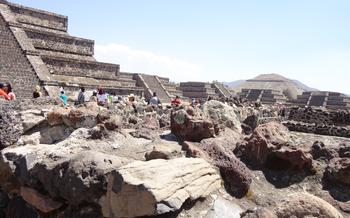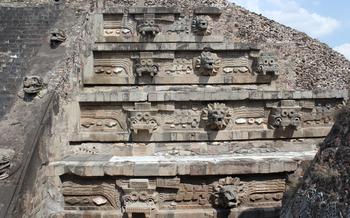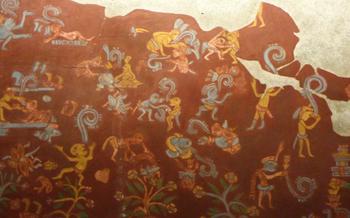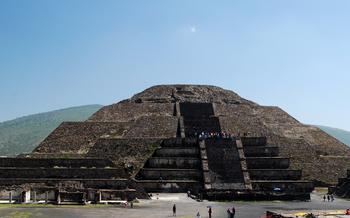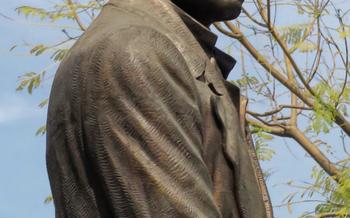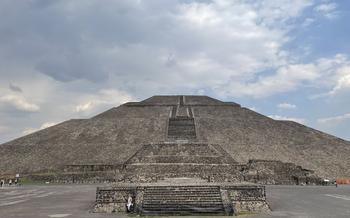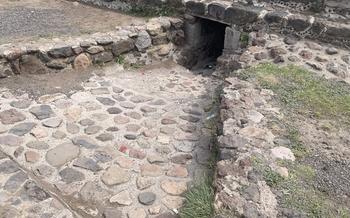
Zempoala Lagoons National Park
- Teotihuacan’s Landscapes: A Journey to the Past
- Exploring the Zempoala Lagoons National Park: An Oasis in the Desert
- A Walk Through Time: Discovering the Ancient City of Teotihuacan
- Unveiling the Secrets of the Teotihuacan Murals: A Glimpse into the Past
- A Journey of Flavors: Exploring Teotihuacan’s Culinary Delights
- Finding Your Zen: Exploring the Hot Springs and Spas of Teotihuacan
- A Night Under the Stars: Camping in the Teotihuacan Valley
- Unleash your Inner Archaeologist: Participating in Archaeological Tours
- Witnessing the Magic: Attending the Equinox Celebrations
- Exploring the Local Markets: A Journey into Authenticity
- A Journey Through Time: Visiting the Teotihuacan Museum
- Stepping into the Past: Experiencing the Nightly Light Show
- Going Beyond the Pyramids: Exploring the Lesser-Known Gems
- Sustainable Tourism: Traveling Responsibly in Teotihuacan
- Insider Tip: Discovering the Hidden Gems of the Zempoala Lagoons
Teotihuacan’s Landscapes: A Journey to the Past
Once a sprawling metropolis that rivaled Rome in size and splendor, Teotihuacan stands today as a testament to the ingenuity and artistry of its ancient inhabitants. The city's iconic pyramids and temples, set against a backdrop of rolling hills and desert landscapes, create a breathtaking panorama that transports visitors back in time.
Teotihuacan's history is shrouded in mystery, with its origins lost to the sands of time. However, archaeological evidence suggests that the city was founded around 100 BC and reached its peak around 500 AD. At its height, Teotihuacan covered an area of over 20 square kilometers and was home to an estimated 125,000 people.
The city's cultural significance extends far beyond its physical remains. Teotihuacan was a major religious and political center, and its influence can be seen throughout Mesoamerica. The city's art, architecture, and religious practices have left a lasting legacy on the region, and its impact can still be seen in modern Mexican culture.
The natural beauty of the surrounding area adds to the allure of Teotihuacan. The city is nestled in a fertile valley, surrounded by mountains and desert landscapes. The nearby Zempoala Lagoons National Park offers a unique opportunity to explore the region's diverse ecosystem, with its stunning lagoons, wetlands, and wildlife.
As a UNESCO World Heritage Site, Teotihuacan is a priceless treasure that must be protected and preserved for future generations. Visitors to the site can help to ensure its continued legacy by respecting the environment and following responsible tourism practices.
Exploring the Zempoala Lagoons National Park: An Oasis in the Desert
Located just a short distance from the ancient city of Teotihuacan, the Zempoala Lagoons National Park offers a unique and captivating natural retreat. This stunning park encompasses a series of interconnected lagoons, surrounded by a diverse array of desert flora and fauna. The lagoons themselves are a sight to behold, their shimmering waters reflecting the vibrant colors of the surrounding landscape.
The park's unique ecosystem is home to a wide range of wildlife, including over 200 species of birds, making it a paradise for birdwatchers and nature enthusiasts. Among the many species that call the park home are migratory birds such as ducks, geese, and herons, as well as resident species such as egrets, hawks, and owls. The park also provides a habitat for various reptiles, amphibians, and mammals, including coyotes, bobcats, and rabbits.
The importance of conservation efforts in the Zempoala Lagoons National Park cannot be overstated. The park's unique ecosystem is fragile and faces a number of threats, including pollution, habitat loss, and climate change. Conservation efforts are essential to protect the park's natural beauty and biodiversity for future generations to enjoy.
A Walk Through Time: Discovering the Ancient City of Teotihuacan
The history and significance of the Pyramid of the Sun:
The Pyramid of the Sun, the largest structure in Teotihuacan, stands as a testament to the city's architectural prowess and religious beliefs. Built between 100 and 200 AD, it served as a temple dedicated to the sun god, Tonatiuh. Its colossal size, measuring 246 feet in height and covering an area of over 13 acres, reflects the importance of the sun god in Teotihuacan society.
The symbolism and architecture of the Pyramid of the Moon:
The Pyramid of the Moon, the second-largest pyramid in Teotihuacan, is believed to have been dedicated to the moon goddess, Chalchiuhtlicue. Constructed between 250 and 400 AD, it showcases a different architectural style compared to the Pyramid of the Sun. Its smaller size and steeper incline indicate a shift in religious beliefs and practices over time.
The mysteries surrounding the Avenue of the Dead:
The Avenue of the Dead, the main ceremonial thoroughfare of Teotihuacan, stretches for over two miles, connecting the Pyramid of the Moon to the Pyramid of the Sun. Lined with temples, palaces, and residential compounds, this grand avenue served as a stage for religious processions, rituals, and public gatherings. Its exact purpose and significance remain a mystery, fueling the fascination and intrigue surrounding Teotihuacan.
The wonders of the Temple of Quetzalcoatl:
The Temple of Quetzalcoatl, also known as the Temple of the Feathered Serpent, is one of the most iconic structures in Teotihuacan. Dedicated to the feathered serpent god, Quetzalcoatl, it features elaborate carvings and sculptures depicting the deity and other mythological figures. The temple's colorful murals and intricate architecture provide a glimpse into the rich artistic and religious traditions of Teotihuacan.
Unveiling the Secrets of the Teotihuacan Murals: A Glimpse into the Past
The ancient city of Teotihuacan is renowned for its stunning murals, which offer a glimpse into the vibrant culture and beliefs of its inhabitants. These intricate and colorful artworks adorn the walls of temples, palaces, and residential buildings, providing a visual narrative of the city's history and mythology.
Crafted by skilled artisans using natural pigments derived from minerals, plants, and insects, the murals showcase a diverse range of themes and styles. They depict scenes of daily life, religious ceremonies, mythical creatures, and historical events, offering insights into the social, political, and spiritual aspects of Teotihuacan society.
One of the most iconic murals is found in the Temple of Quetzalcoatl, the Feathered Serpent. This masterpiece depicts the god Quetzalcoatl emerging from a conch shell, surrounded by a procession of priests and worshippers. The vibrant colors and intricate details of the mural bring the scene to life, allowing visitors to connect with the spiritual beliefs of the ancient Teotihuacanos.
The murals of Teotihuacan are not only visually stunning but also hold immense cultural and historical significance. They provide valuable clues about the city's development, its religious practices, and its interactions with other Mesoamerican civilizations. Ongoing efforts are underway to preserve and study these precious artworks, ensuring that they continue to captivate and inspire future generations.
A Journey of Flavors: Exploring Teotihuacan’s Culinary Delights
Teotihuacan's culinary traditions are a testament to the region's rich history and cultural heritage. The city's unique location and diverse influences have shaped a cuisine that is both distinctive and delicious. At the heart of Teotihuacan's cuisine lies the use of fresh, local ingredients, many of which have been cultivated in the region for centuries. Traditional dishes often feature corn, beans, squash, and chili peppers, combined to create flavorful and nutritious meals.
One of the most iconic dishes of Teotihuacan is barbacoa, a slow-cooked meat dish that is typically made with lamb or goat. The meat is marinated in a special blend of spices and herbs, then wrapped in maguey leaves and cooked underground for several hours. The result is a tender and flavorful dish that is sure to satisfy even the most discerning palate.
Another popular dish is tlacoyos, which are thick, handmade corn tortillas filled with beans, cheese, or potatoes. Tlacoyos are often served with a variety of salsas, including the famous green salsa made from roasted tomatillos.
For those with a sweet tooth, Teotihuacan offers a variety of traditional desserts, such as bunuelos, deep-fried pastries that are filled with sweet cream or fruit fillings. Champurrado, a warm and comforting drink made with cornmeal, chocolate, and cinnamon, is also a must-try for visitors to the city.
Street food plays a vital role in Teotihuacan's culinary scene. Vendors can be found throughout the city, selling everything from tacos and tamales to fresh fruit and juices. Street food is a great way to sample the local cuisine and get a taste of the city's vibrant atmosphere.
When in Teotihuacan, be sure to try some of the local dishes and drinks. Whether you're looking for a hearty meal or a sweet treat, you're sure to find something to satisfy your taste buds.
Finding Your Zen: Exploring the Hot Springs and Spas of Teotihuacan
Teotihuacan is not only a place of ancient ruins and historical wonders but also a haven for relaxation and rejuvenation. The region is blessed with numerous natural hot springs and spas, offering visitors a chance to soak away their worries and embrace the healing powers of nature.
The hot springs in Teotihuacan are known for their therapeutic properties, believed to alleviate various ailments such as muscle pain, joint inflammation, and stress. The mineral-rich waters are said to have detoxifying and rejuvenating effects, leaving visitors feeling refreshed and revitalized.
There are several hot springs and spas to choose from in Teotihuacan, ranging from rustic outdoor pools to luxurious resorts with state-of-the-art facilities. Whether you prefer a secluded retreat or a more social experience, you'll find something to suit your needs.
Some of the most popular hot springs in Teotihuacan include the Baños de San Juan, located just a short walk from the archaeological site, and the Termas de Teotihuacan, a modern spa complex with a variety of pools, saunas, and massage services.
To fully immerse yourself in the Teotihuacan experience, consider booking a spa treatment that incorporates local traditions and ingredients. Many spas offer massages using techniques inspired by ancient Teotihuacan healing practices, as well as treatments that utilize native plants and herbs known for their therapeutic properties.
Whether you're seeking a relaxing getaway or a chance to indulge in some self-care, Teotihuacan's hot springs and spas offer a unique and rejuvenating experience that will leave you feeling refreshed and revitalized.
A Night Under the Stars: Camping in the Teotihuacan Valley
Camping in the Teotihuacan Valley offers a unique and immersive experience for those seeking a deeper connection with the ancient ruins. Several designated campgrounds are scattered throughout the valley, providing a range of options for campers of all levels.
The most popular camping spot is the Santa María Acolman Campground, situated just a short walk from the Pyramid of the Sun. This campground offers basic amenities such as restrooms, showers, and picnic tables, allowing campers to enjoy a comfortable stay while being surrounded by the majesty of the ancient city.
Another popular option is the San Juan Teotihuacan Campground, located on the outskirts of the city. This campground offers a more rustic experience, with fewer amenities but more privacy and tranquility. Campers can pitch their tents beneath the starry sky, surrounded by the sounds of nature and the distant echoes of the ancient past.
For those seeking a truly unique experience, the La Malinche National Park offers backcountry camping opportunities amidst stunning natural scenery. Campers can hike or bike to designated campsites, where they can set up their tents and enjoy the solitude of the wilderness while being just a stone's throw away from the ancient ruins.
No matter which campground you choose, camping in the Teotihuacan Valley is an unforgettable experience. As the sun sets and the stars begin to twinkle, the ancient city takes on a magical aura, transporting campers back in time to the days when Teotihuacan was a bustling metropolis.
Safety Tips for Camping in the Valley
-
Always be aware of your surroundings and keep your valuables secure.
-
Camp in designated campgrounds and avoid camping alone.
-
Bring a flashlight or headlamp for nighttime navigation.
-
Be prepared for changes in weather conditions, especially during the rainy season.
-
Respect the ancient ruins and the natural environment, and leave no trace of your stay.
Unleash your Inner Archaeologist: Participating in Archaeological Tours
Immerse yourself in the fascinating world of archaeology by participating in one of the many archaeological tours offered in Teotihuacan. These tours are led by experienced archaeologists who will guide you through the ancient city and share their knowledge about its history, culture, and significance. You'll have the chance to visit restricted areas, get up close to the ruins, and even participate in hands-on activities such as excavating artifacts or cleaning pottery.
There are different types of archaeological tours to choose from, catering to various interests and budgets. Some tours focus on specific aspects of Teotihuacan, such as its architecture, art, or writing system, while others provide a comprehensive overview of the city's history and culture. You can also opt for private tours for a more personalized experience.
Participating in an archaeological tour is a unique opportunity to learn from experts, gain hands-on experience, and contribute to the ongoing research and preservation efforts at Teotihuacan. It's a must-do for anyone who is passionate about history, archaeology, or simply wants to delve deeper into the mysteries of this ancient city.
Here are some tips for making the most of your archaeological tour experience:
- Choose a reputable tour operator. Do some research and read reviews to find a tour operator that is experienced, knowledgeable, and has a good safety record.
- Book your tour in advance. Archaeological tours can fill up quickly, especially during peak season, so it's important to book your spot well in advance.
- Be prepared for the elements. Teotihuacan can get very hot and sunny, so be sure to wear comfortable clothing, sunscreen, and a hat. Bring plenty of water and snacks as well.
- Ask questions. Don't be afraid to ask your guide questions about anything you're interested in. They are there to share their knowledge and help you learn as much as possible.
- Be respectful. Remember that you are visiting a sacred and historical site, so be respectful of the ruins and the local culture.
Witnessing the Magic: Attending the Equinox Celebrations
In the ancient city of Teotihuacan, the equinoxes were not just astronomical events; they were sacred occasions marked by elaborate rituals and ceremonies. Today, the equinoxes continue to hold a special significance for the local community and visitors alike, offering a unique opportunity to witness the magic of this ancient civilization.
During the spring and autumn equinoxes, the sun aligns perfectly with the Avenue of the Dead, casting a mesmerizing light on the ancient pyramids and temples. This celestial phenomenon was believed to have a profound spiritual meaning for the Teotihuacanos, who gathered in large numbers to celebrate the renewal of life and the changing of seasons.
The equinox celebrations in Teotihuacan are a vibrant spectacle, filled with music, dance, and traditional rituals. Visitors can witness the reenactment of ancient ceremonies, marvel at the colorful costumes and headdresses, and experience the infectious energy that permeates the entire valley.
To fully immerse yourself in the magic of the equinoxes, it is recommended to arrive in Teotihuacan a few days before the event. This will give you ample time to explore the archaeological site, visit the museums, and soak up the local culture. On the day of the equinox, make sure to arrive early to secure a good spot along the Avenue of the Dead.
As the sun rises or sets, casting its golden rays on the ancient pyramids, you will feel a sense of awe and wonder that is hard to describe. It is a moment that transports you back in time, connecting you with the ancient civilization that once thrived in this sacred place.
Whether you are a history buff, a spiritual seeker, or simply someone who appreciates cultural traditions, attending the equinox celebrations in Teotihuacan is an unforgettable experience that will leave you with lasting memories.
Exploring the Local Markets: A Journey into Authenticity
Teotihuacan is home to a vibrant and diverse array of markets, each offering a unique glimpse into the local culture and traditions. From bustling craft markets to traditional food markets, these marketplaces are a treasure trove of authentic souvenirs, handicrafts, and culinary delights.
The main market in Teotihuacan is the Mercado de Artesanías, located just a short walk from the Pyramid of the Sun. Here, visitors can find an extensive selection of handmade goods, including pottery, textiles, jewelry, and wood carvings. The market is also a great place to sample local street food, such as tacos, quesadillas, and freshly squeezed juices.
For those seeking a more traditional market experience, the Mercado Hidalgo is a must-visit. This covered market offers a wide variety of fresh produce, meats, cheeses, and spices. It is also a great place to find traditional Mexican dishes, such as mole poblano and enchiladas.
When shopping in Teotihuacan's markets, it is important to remember to bargain. Prices are often negotiable, and visitors can often get a good deal if they are willing to haggle. It is also important to be respectful of the vendors and to avoid haggling over small amounts of money.
Exploring the local markets is a great way to connect with the local culture and to find unique souvenirs to take home. It is also a great way to support the local economy and to contribute to the preservation of traditional crafts and culinary traditions.
A Journey Through Time: Visiting the Teotihuacan Museum
Nestled at the foot of the majestic pyramids, the Teotihuacan Museum stands as a testament to the rich cultural heritage of the ancient city. Within its walls, visitors are transported back in time, immersed in the captivating world of Teotihuacan's people.
The museum's extensive collection of artifacts provides a glimpse into the daily lives, beliefs, and artistic expressions of this enigmatic civilization. From intricate pottery and obsidian tools to stunning murals and sculptures, each artifact tells a story of a people who left an indelible mark on history.
Interactive exhibits and educational programs bring the past to life, allowing visitors to engage with the culture and history of Teotihuacan in a meaningful way. Through hands-on experiences and multimedia presentations, the museum fosters a deeper understanding and appreciation for this ancient civilization.
As you wander through the museum's galleries, you'll discover the secrets behind the construction of the pyramids, unravel the mysteries surrounding the city's sudden abandonment, and gain insights into the complex social and political structures that governed Teotihuacan.
The Teotihuacan Museum is a must-visit for anyone seeking to delve into the depths of this ancient civilization. It serves as a bridge between the past and the present, preserving and showcasing Teotihuacan's cultural heritage for generations to come.
Stepping into the Past: Experiencing the Nightly Light Show
As the sun sets over the ancient city of Teotihuacan, a magical transformation takes place. The Pyramid of the Sun and the Pyramid of the Moon become the canvas for a breathtaking light and sound show that brings the city's past to life. The show, entitled "Night of the Gods," is a captivating blend of history, culture, and technology that immerses visitors in the grandeur of Teotihuacan's golden age.
The show begins with a brief history of the city, narrated in Spanish and English. As the story unfolds, the pyramids are illuminated with vibrant colors, creating a mesmerizing visual spectacle. The sound of traditional Mexican music and chanting fills the air, adding to the immersive experience.
As the show progresses, visitors are taken on a journey through the city's most important landmarks, including the Avenue of the Dead, the Temple of Quetzalcoatl, and the Palace of Quetzalpapalotl. Each site is brought to life with stunning visuals and sound effects, offering a unique perspective on Teotihuacan's rich history and culture.
The Night of the Gods light show is a must-see experience for anyone visiting Teotihuacan. It is a captivating and educational way to learn about the city's past and immerse oneself in its vibrant culture. Whether you are a history buff, a culture enthusiast, or simply someone looking for a unique and memorable experience, this show will not disappoint.
Here are some tips for getting the most out of the Night of the Gods light show:
- Book your tickets in advance, especially if you are visiting during peak season.
- Arrive at the show early to secure a good spot.
- Bring a blanket or cushion to sit on, as the ground can be hard and uncomfortable.
- Dress warmly, as the nights can be chilly, especially during the winter months.
- Take your time and enjoy the show. It is a truly unique and unforgettable experience.
Going Beyond the Pyramids: Exploring the Lesser-Known Gems
While the pyramids are undoubtedly the most famous landmarks in Teotihuacan, there are many other lesser-known archaeological sites in the surrounding area that are equally fascinating and offer unique experiences. These hidden gems provide a glimpse into the diverse cultural heritage of the region and allow visitors to explore the ancient city beyond the main tourist trail.
One such site is the Tula Archaeological Zone, located about 40 kilometers northeast of Teotihuacan. Tula was once the capital of the Toltec civilization, which flourished in the 10th and 11th centuries AD. The site features impressive pyramids, temples, and sculptures, including the iconic Temple of Quetzalcoatl, with its massive stone columns adorned with intricate carvings of plumed serpents.
Another must-visit site is the Teotenango Archaeological Zone, located about 20 kilometers southwest of Teotihuacan. This site was once a major religious and ceremonial center for the Matlatzinca people, who inhabited the region during the Post-Classic period. The site features several temples, pyramids, and a unique circular platform known as the Cuauhcalli, or "Eagle House."
For those interested in exploring even further off the beaten path, there are several smaller archaeological sites scattered throughout the Teotihuacan Valley, each with its own unique charm and history. These sites may not be as well-known as the pyramids, but they offer a more intimate and authentic experience, allowing visitors to connect with the ancient past in a more personal way.
When visiting these lesser-known sites, it is important to be respectful of the local communities and the environment. Visitors should always obtain permission from the landowners before entering any private property, and they should take care not to damage or disturb any archaeological remains. By following these guidelines, visitors can help to preserve these important cultural heritage sites for future generations.
Sustainable Tourism: Traveling Responsibly in Teotihuacan
As responsible travelers, it's essential to minimize our environmental impact and support local communities to ensure Teotihuacan's cultural heritage remains intact for generations to come. Reduce your carbon footprint by opting for eco-friendly transportation options like walking, cycling, or using public transport. Conserve water and energy by being mindful of your usage in hotels and restaurants.
Respect the local culture by dressing appropriately, asking permission before taking photos of people, and learning a few Spanish phrases to communicate with locals. Support local businesses by buying souvenirs from artisan markets, eating at local restaurants, and using local tour operators.
Choose sustainable tour operators that prioritize responsible tourism practices, such as using eco-friendly vehicles, employing local guides, and contributing to community development projects. Educate yourself about the local environment and culture before your trip, and be respectful of the ancient ruins and artifacts.
By practicing sustainable tourism, you can help preserve Teotihuacan's cultural and natural heritage while ensuring that local communities benefit from tourism.
Insider Tip: Discovering the Hidden Gems of the Zempoala Lagoons
Beyond the well-known attractions of the Zempoala Lagoons National Park, there are hidden gems waiting to be discovered by adventurous travelers. For birdwatchers and wildlife enthusiasts, secret spots offer unparalleled opportunities to observe a diverse array of species in their natural habitat. Whether you're seeking tranquility or an adrenaline rush, off-the-beaten-track trails cater to hikers and nature enthusiasts of all levels, leading to breathtaking viewpoints and secluded swimming spots.
To truly immerse yourself in the park's natural wonders, consider hiring local guides or tour operators who can lead you to hidden treasures and share their knowledge of the area's unique ecosystem. They can guide you to secluded lagoons perfect for kayaking or fishing, reveal ancient petroglyphs hidden among the rocks, and introduce you to local conservation efforts that are protecting this fragile environment.
Remember, when exploring these hidden gems, it's essential to practice responsible tourism. Stay on designated trails to minimize your impact on the environment, respect wildlife by observing from a distance, and pack out all your trash to keep the park pristine. By embracing sustainable practices, you can help preserve these hidden treasures for future generations to enjoy.
